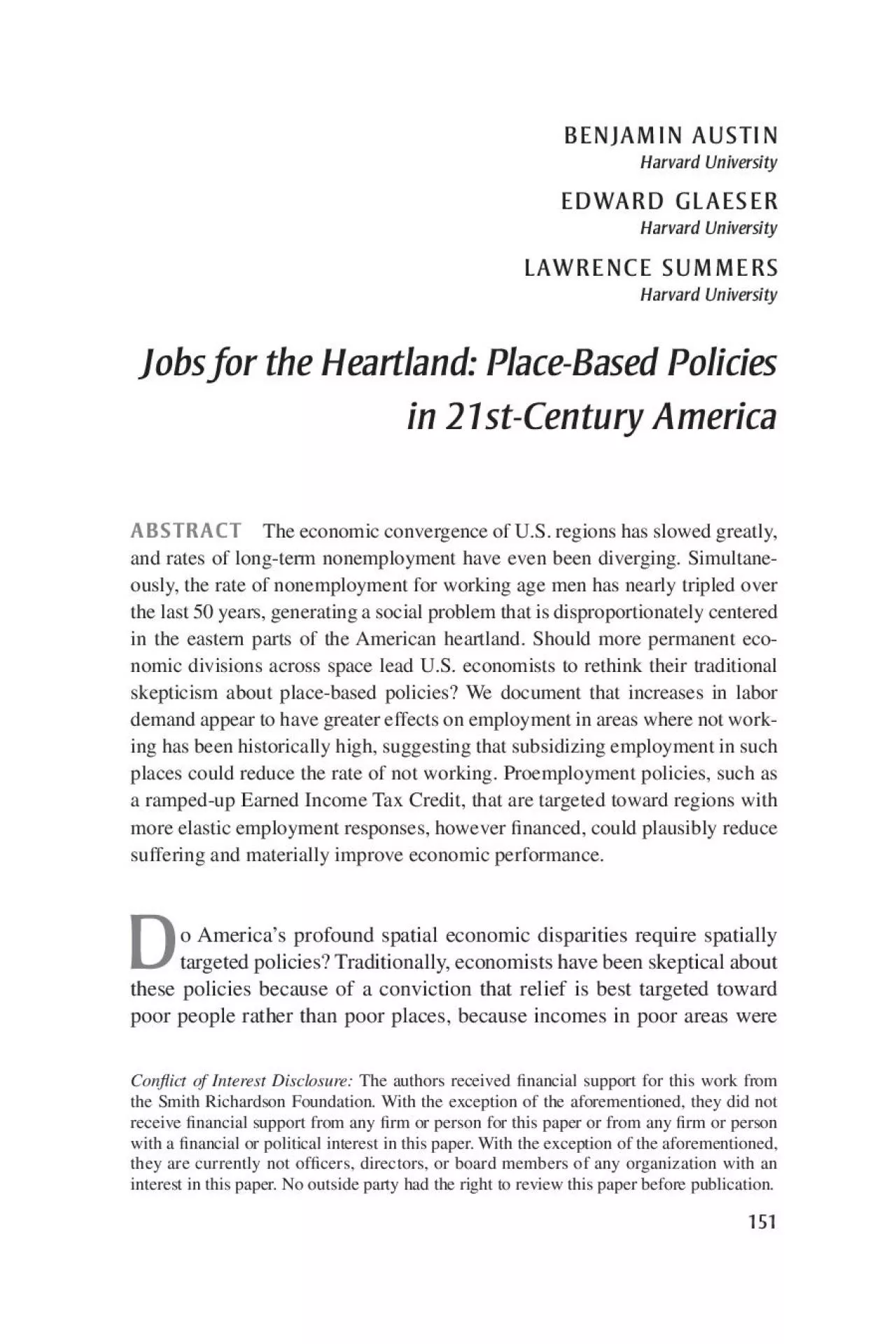PDF-To appreciate the contribution of this paper by Benjamin Austin Edward
Author : catherine | Published Date : 2021-09-27
Brookings Papers on Economic Activity be made that policies should differ across the regions of a country These baby of spatial differentiation out with the bathwater
Presentation Embed Code
Download Presentation
Download Presentation The PPT/PDF document "To appreciate the contribution of this p..." is the property of its rightful owner. Permission is granted to download and print the materials on this website for personal, non-commercial use only, and to display it on your personal computer provided you do not modify the materials and that you retain all copyright notices contained in the materials. By downloading content from our website, you accept the terms of this agreement.
To appreciate the contribution of this paper by Benjamin Austin Edward: Transcript
Download Rules Of Document
"To appreciate the contribution of this paper by Benjamin Austin Edward"The content belongs to its owner. You may download and print it for personal use, without modification, and keep all copyright notices. By downloading, you agree to these terms.
Related Documents














